-
Crate Train Rottweiler Puppy: Crate = Safe Space. Give your Rottie a den of their own for relaxation and security.
-
Right-Sized Crate: Big enough to be comfy, but not big enough for accidents.
-
Accidents happen: Stay calm, adjust your approach, and keep going.
-
Patience is key: Introduce the crate slowly, use rewards, and celebrate successes.
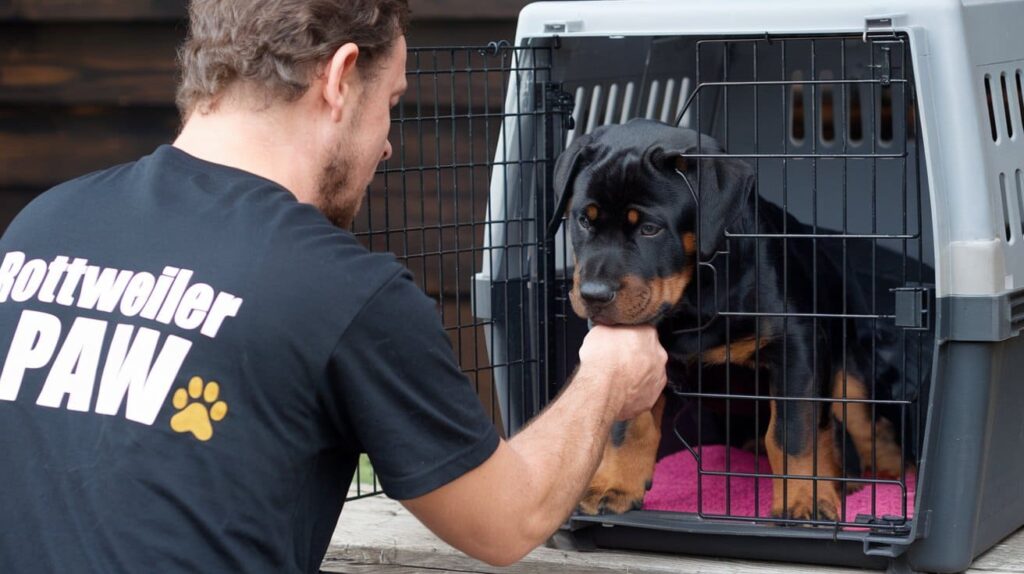
Bringing home a Rottweiler puppy? Congrats! Get ready for cuddles and…crate training. It’s like giving your Rottie their own cozy den where they can relax and feel safe. Plus, it makes potty training a breeze! Let’s explore why crate training is a game-changer for your Rottweiler.
Why Crate Train Your Rottweiler Puppy?
- Prevents accidents (who doesn’t love a clean carpet?)
- Keeps your Rottie safe from chewing on dangerous things
- Helps them feel secure and less stressed
- Makes travel easier (think of it as their mobile home!)
Crate training: It’s about safety, comfort, and making puppyhood a whole lot easier!
Step 1: Choosing the Right Crate
Size Matters! (For Puppies and Crates)
Choosing the right size crate is like finding the perfect pair of shoes – it needs to fit just right! Your Rottie should be able to stand up, turn around, and lie down comfortably.
Why not get a giant crate? Well, if it’s too big, your pup might decide one corner is the bedroom and the other is the bathroom (yikes!).
Don’t worry about your Rottie outgrowing their crate! You can get one that fits their adult size and use a divider to adjust the space as they grow. It’s like magic!
For most Rottweilers, a crate around 42″ long is perfect. But if you think your pup will be extra-large, you might need to go bigger.
Choosing a crate is like picking the right shoes! Wire crates are like jeans – classic and sturdy. Plastic crates are like a cozy cabin – secure and private. Soft-sided crates are like sweatpants – comfy and portable.
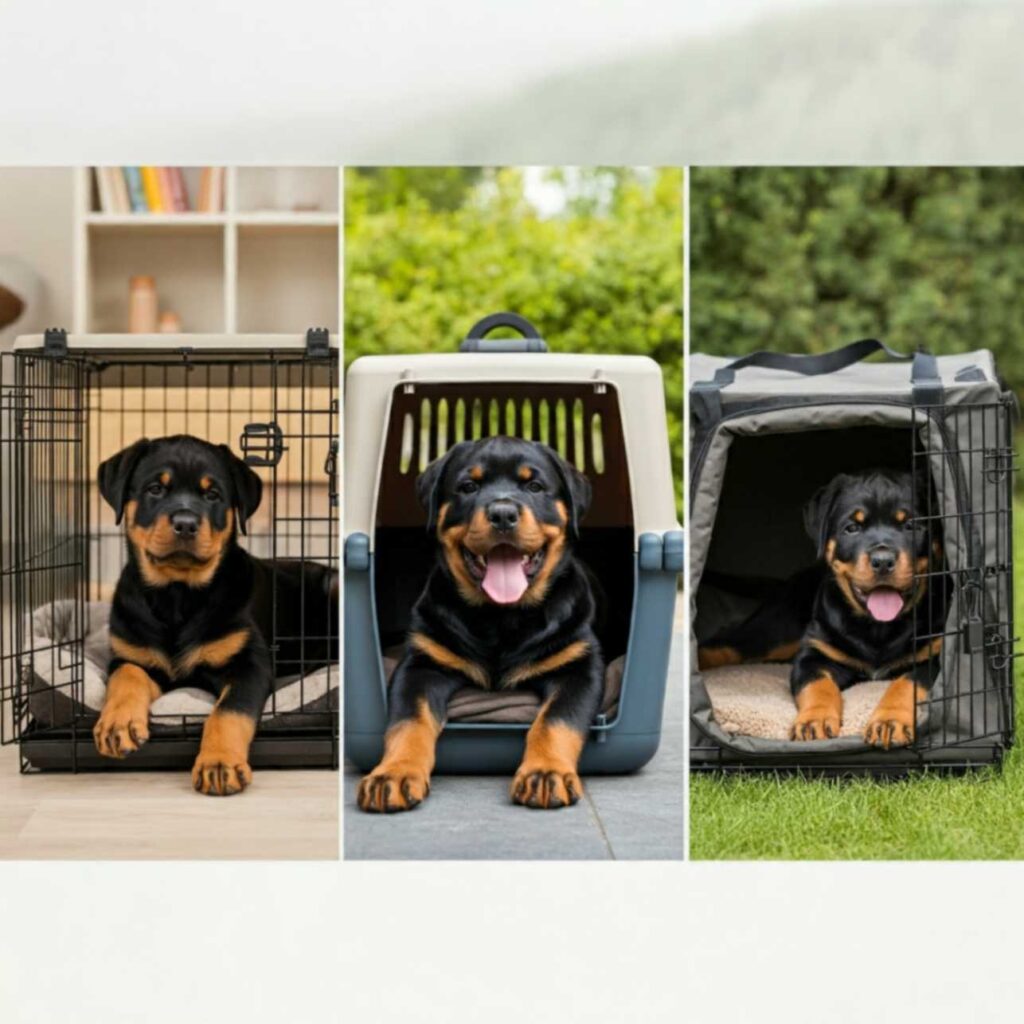
- Wire crates: Great for ventilation and visibility, but not ideal for super chewers.
- Plastic crates: Perfect for travel and privacy, but can be less ventilated.
- Soft-sided crates: Lightweight and portable, but not as durable for strong chewers.
For most Rottweilers, a wire or plastic crate is a great choice. The best one for your Rottie depends on their personality, your lifestyle, and what you like!
Step 2: Setting Up Your Rottie's Crib: Cozy Quarters for Canine Comfort
Okay, so you’ve found the perfect crate. Now it’s time to turn it into a puppy paradise! After all, you wouldn’t want to sleep on a bare mattress in an empty room, would you?
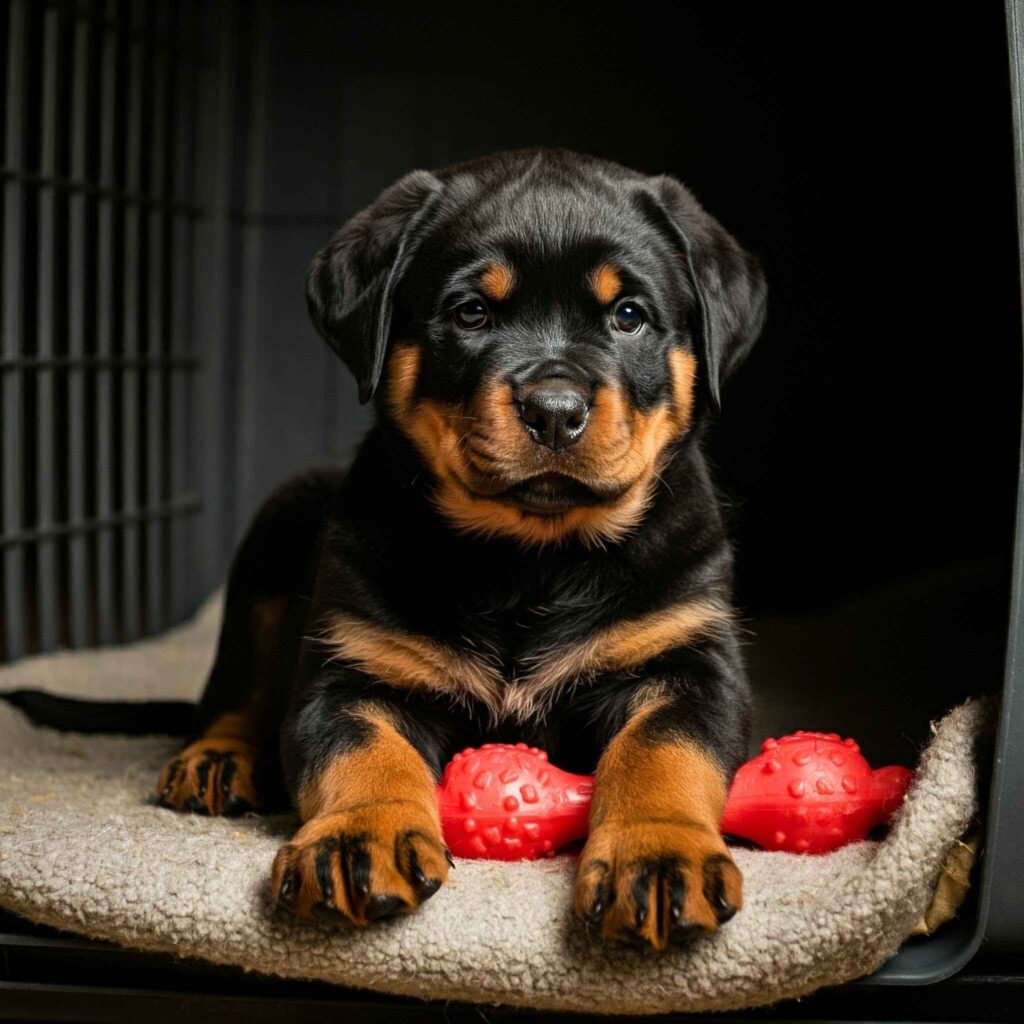
Comfy Cozy Critter Condo
First things first, let’s make that crate comfy! A soft bed or blanket will do wonders for your Rottie’s snoozing pleasure. Choose something that’s machine washable (because accidents happen!), and avoid anything with small parts that could be a choking hazard. (Those puppy teeth are sharp!)
Toys, Toys, Toys!
Next up, let’s add some fun! Toss in a few of your Rottie’s favorite toys to keep them entertained. Chew toys are a must-have for those teething troubles, and puzzle toys can provide mental stimulation and keep those clever minds engaged.
Make sure the toys you choose are safe and durable. VCA Animal Hospitals offers helpful advice on selecting appropriate toys for your dog.
Hydration Station
Don’t forget the water! A secure water bowl attached to the crate door will ensure your Rottie stays hydrated, even during those longer crate sessions. (No spills, no fuss!)
Safety First!
Before you give your Rottie the grand tour of their new digs, make sure the crate is squeaky clean and free of any hazards. Remove any loose tags or collars that could get caught on the crate, and double-check that there are no sharp edges or protruding wires.
Location, Location, Location!
Where you place the crate is important, too. Think of it like choosing the perfect spot for your own bed. You wouldn’t want to sleep in a drafty hallway or next to a blaring radiator, would you?
Place your Rottie’s crate in a central area of the house where they can feel like part of the family action. Avoid spots that are too hot, too cold, or too noisy.
And if your Rottie is a bit anxious, you might want to place the crate near your bedroom, especially during those first few nights.
With a little planning and a touch of puppy love, you can turn that crate into a cozy haven that your Rottie will love to call their own.
Step 3: Crate Training Techniques: Turning Your Rottie into a Crate Enthusiast
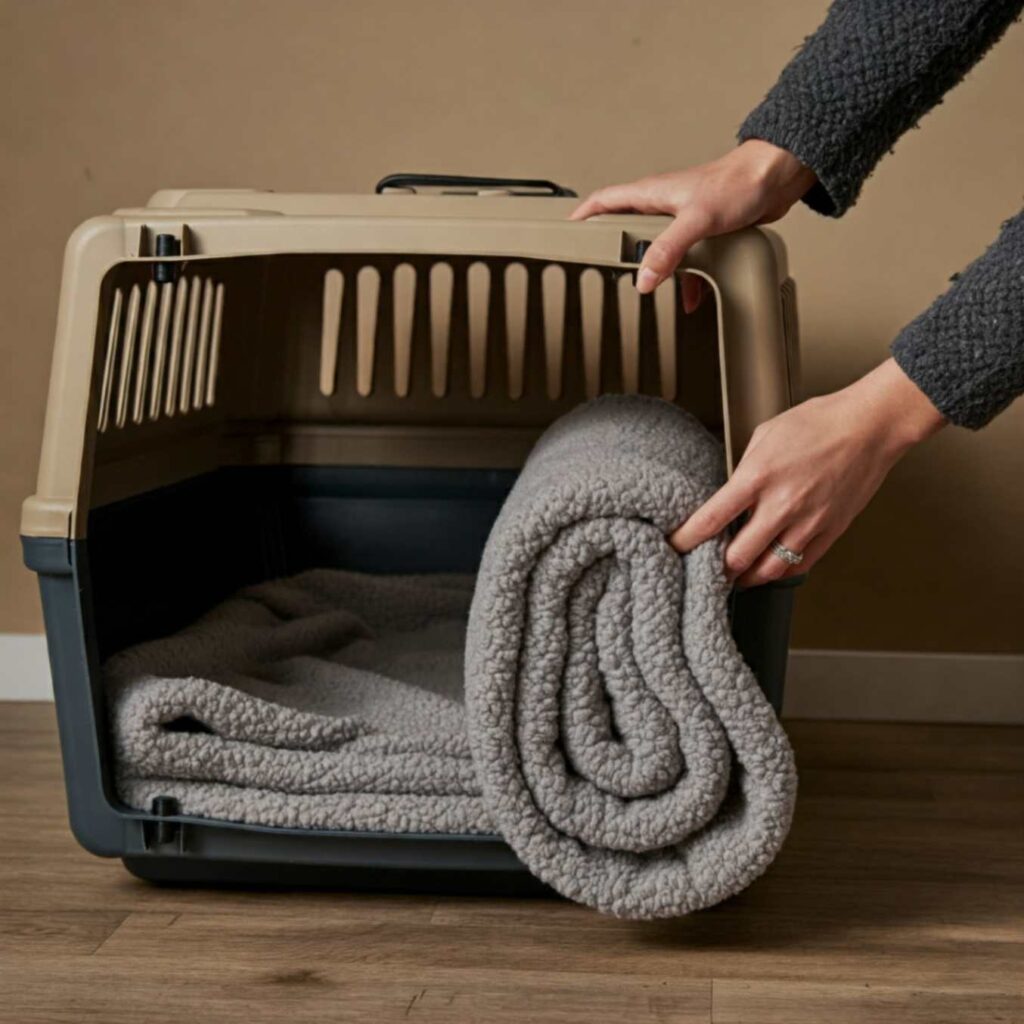
Alright, you’ve got the perfect crate, it’s all decked out with comfy bedding and fun toys. Now, how do you actually get your Rottweiler puppy to love their new den? Here’s the secret: take it slow and steady!
Slow and Steady Wins the Crate Race
Think of it like introducing your pup to a new friend. You wouldn’t just throw them into a big hug and expect them to be best buddies right away, would you? The same goes for the crate.
Start by making the crate a super fun and appealing place. Toss in some tasty treats, a few of their favorite toys, and maybe even a long-lasting chew. Let your Rottie explore the crate at their own pace, sniffing around and discovering all the goodies you’ve hidden inside.
No Pushing Allowed!
Whatever you do, don’t force your puppy into the crate! That’s like shoving them into that hug with a stranger – it’s only going to make them scared and wary. Instead, let them approach the crate on their own terms. For a humane and effective approach, check out The Humane Society – Crate Training 101.
You can encourage them by tossing treats near the crate, then just inside the door, and eventually all the way in the back. Use a happy and encouraging voice, and praise them like crazy when they show any interest in the crate.
Patience is a Virtue (Especially with Puppies!)
Remember, patience is key! Some puppies will take to the crate right away, while others might need a little more time to warm up to it. That’s totally normal! Just keep those positive vibes flowing, and your Rottie will eventually see the crate as their own personal puppy paradise.
Step 4. Dinner in the Den: Making Mealtime a Crate-tastic Experience
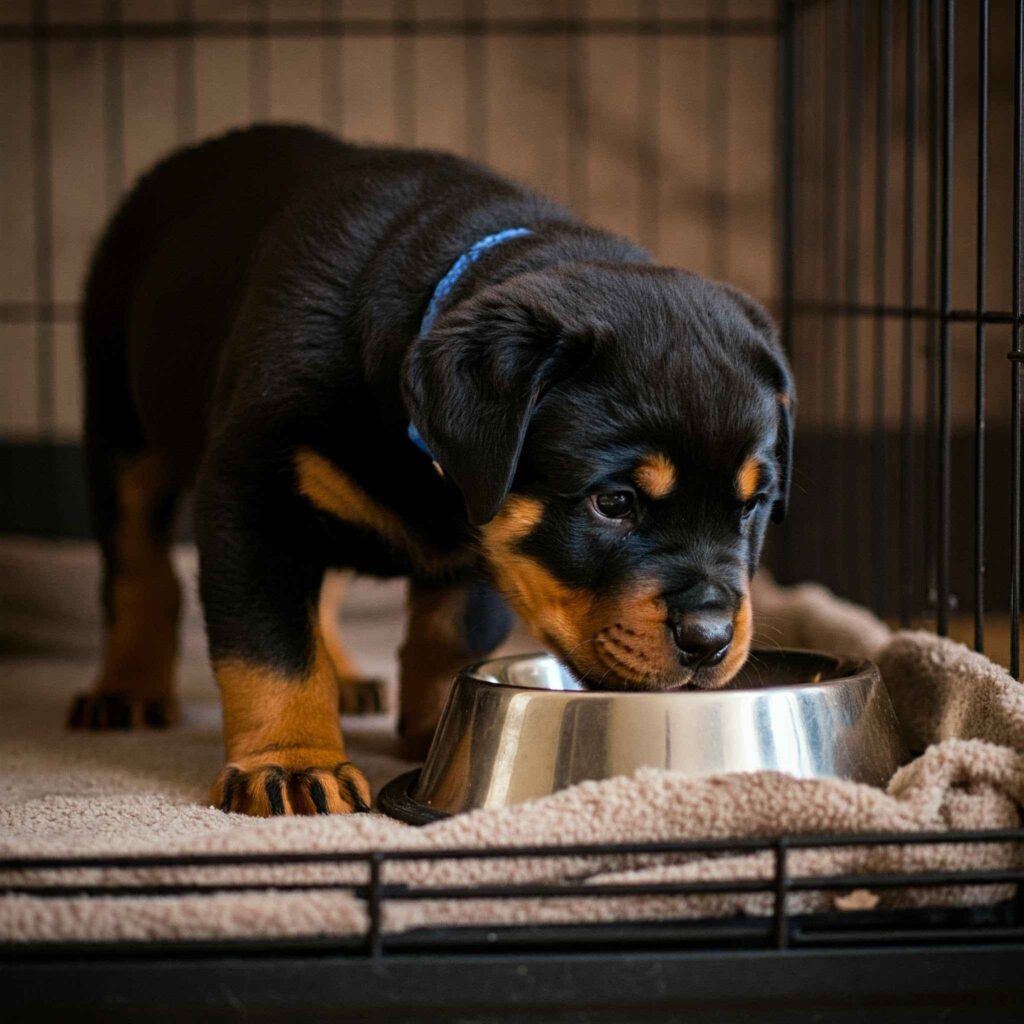
Okay, so your Rottie pup is starting to warm up to their crate. Now it’s time to take things to the next level: dinner in the den!
Food = Happy Pup = Happy Crate
You know how excited your Rottie gets when they hear the rustle of the treat bag or the clink of their food bowl? That’s pure puppy joy! And we’re going to use that excitement to our advantage.
By feeding your Rottie in their crate, you’re creating a positive association with the space. They’ll start to think, “Hey, this crate is where I get my yummy food! This place is awesome!”
Step-by-Step to Crate-y Cuisine
Here’s how to make mealtime a crate-tastic experience:
- Start near the crate: At first, place your Rottie’s food bowl near the crate entrance. Let them eat their meal there, nice and relaxed.
- Move it in: Once your pup is comfortable eating near the crate, start moving the food bowl further and further inside. A little closer with each meal.
- Close the door (briefly!): When your Rottie is happily munching away inside the crate, try closing the door for a few seconds. Then open it back up and let them finish their meal.
- Extend the time: Gradually increase the amount of time the door is closed while your pup is eating. Start with just a few seconds, then a minute, then a few minutes, and so on.
Patience, Young Padawan
Remember, patience is key! If your Rottie seems anxious or uncomfortable at any point, take a step back and go at their pace. The goal is to make mealtime in the crate a fun and positive experience, not a stressful one.
With a little time and a lot of tasty food, your Rottie will soon be gobbling up their meals in their crate like it’s the best restaurant in town!
Step 5: Building Up Crate Confidence: Slow and Steady Wins the Race
Think of crate training like a marathon, not a sprint. You wouldn’t expect your Rottie pup to run 26 miles on their first day, would you? The same goes for crate time. Start small and gradually build up their endurance.
Short and Sweet Crate Sessions
Begin with very short crate sessions – just 5 or 10 minutes at first. You can even hang out near the crate while your pup is inside, so they don’t feel alone. Gradually increase the duration as your Rottie becomes more comfortable.
Crate Time = Fun Time!
Make crate time a positive experience by associating it with fun activities. Give your pup a special chew toy or a puzzle feeder that they only get in the crate. This will help them see the crate as a place of reward and relaxation, not punishment.
Naptime is Crate Time
Puppies are basically professional nappers, so take advantage of those sleepy moments! Encourage your Rottie to take naps in their crate. This will help them associate the crate with rest and relaxation.
Potty Breaks are a Must!
Before you put your Rottie in their crate, always take them for a potty break. And as soon as you let them out of the crate, it’s potty time again! This will help prevent accidents and reinforce good potty habits.
The Gradual Crate Training Game Plan
Here’s a sample schedule you can follow:
- Week 1: 5-10 minutes at a time, several times a day.
- Week 2: 15-20 minutes at a time, several times a day.
- Week 3: 30 minutes to an hour at a time, a few times a day.
And so on, gradually increasing the time as your Rottie gets used to their crate. Remember, every pup is different, so adjust the schedule based on your Rottie’s individual needs and progress.
Troubleshooting and Common Concerns
Okay, let’s be real. Puppyhood isn’t always sunshine and rainbows. There might be a few tears (or should we say, whines?) along the way. But don’t worry, a little whining is totally normal, especially in the beginning of crate training.
Why the Waterworks?
Think about it from your Rottie pup’s perspective. They’re in a new environment, away from their mom and littermates, and now they’re spending time in this new thing called a crate. It’s a big adjustment! So, a little whining is just their way of saying, “Hey, I’m a bit unsure about this whole crate thing.”
Don’t Give In to the Whines!
Now, here’s the important part: try not to give in to the whining right away. If you rush to let your Rottie out every time they make a peep, they’ll quickly learn that whining = freedom. And that’s not exactly what we’re going for.
Wait for a Pause
Instead, wait for a pause in the whining before opening the crate door. Even a few seconds of quiet can make a difference! This teaches your Rottie that patience pays off, and that whining won’t always get them what they want.
Needs Met = Happy Pup
Before you put your Rottie in their crate, make sure all their needs are met. Have they had a recent potty break? Are they hungry or thirsty? Do they have a comfy bed and a fun toy to keep them occupied? A content pup is less likely to whine.
Comfort is Key
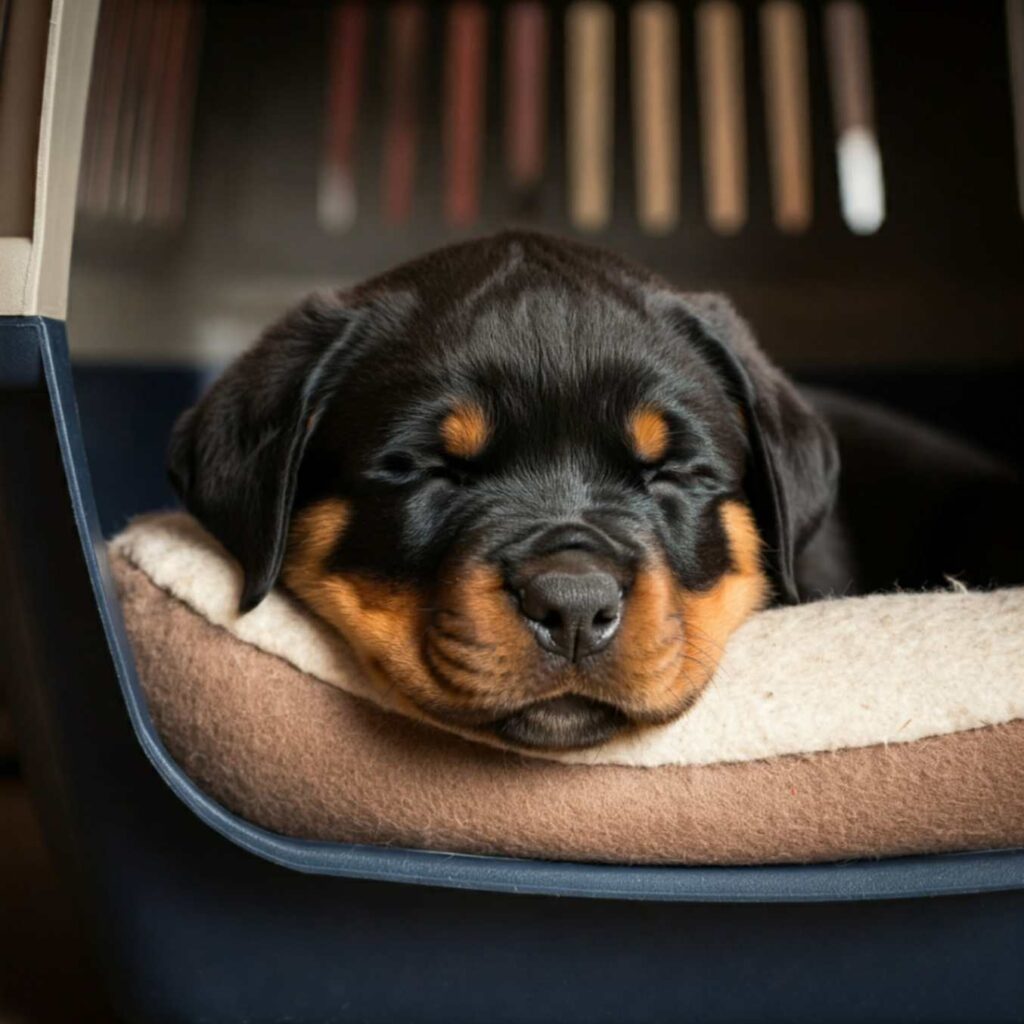
You can also try adding a few comfort items to the crate, like a soft blanket that smells like you or a safe chew toy to keep them busy. This can help your Rottie feel more secure and relaxed in their new den.
When to Worry
If your Rottie’s whining seems excessive or if they’re showing signs of distress (like panting, pacing, or trying to escape the crate), it’s important to take a step back and reassess the situation. They might be trying to tell you that something isn’t right. In this case, it’s always best to consult with your veterinarian or a certified dog trainer for guidance.
Separation Anxiety: When Saying "See Ya Later!" is Ruff
Ah, separation anxiety. It’s a real struggle for some pups, and it can make leaving the house a heart-wrenching experience (for both you and your Rottie!). But here’s the good news: crate training can be a helpful tool in managing those separation woes.
The Crate: A Safe Haven, Not a Punishment Zone
Think of the crate as your Rottie’s security blanket – a familiar and comforting space where they can feel safe and secure when you’re not around. It’s like their own little doggy apartment where they can relax and unwind.
But here’s the important part: the crate should never be used as a punishment for anxiety-related behaviors. That’s like sending your pup to their room when they’re already feeling scared and alone. Not cool!
Instead, focus on creating positive associations with the crate. Make it a fun and happy place with comfy bedding, engaging toys, and maybe even a shirt that smells like you.
When to Call in the Pros
Now, crate training can be a great tool for managing mild separation anxiety, but it’s not a magic cure-all. If your Rottie is experiencing severe separation anxiety, it’s important to seek professional help from your veterinarian or a certified dog behaviorist.
They can help you identify the root cause of your Rottie’s anxiety and develop a customized training plan to address their specific needs.
More Than Just a Crate
In addition to crate training, there are other strategies you can use to help your Rottie cope with separation anxiety, such as:
- Desensitization: Gradually getting your Rottie used to your departures by practicing short absences and gradually increasing the duration.
- Counter-conditioning: Changing your Rottie’s emotional response to your departures by pairing your absence with something positive, like a tasty treat or a fun toy.
With patience, consistency, and a little help from the pros, you can help your Rottie overcome separation anxiety and feel more confident and secure when you’re apart.
If you suspect your Rottweiler is experiencing separation anxiety, it’s essential to address it properly. The American Veterinary Medical Association (AVMA) offers valuable information on recognizing and managing this condition.
Crate Training a Grown-Up Rottie? No Problem!
So, maybe you adopted an older Rottweiler who’s new to the crate game. Or maybe your Rottie decided crates weren’t their thing when they were a puppy, and now you’re giving it another go. No worries! It’s never too late to introduce your Rottie to the wonders of crate training.
Patience is Your Superpower
Crate training an older Rottie might require a bit more patience and consistency than training a puppy. After all, they’ve already got their own set of habits and preferences. But with a positive attitude and a few adjustments, you can help your Rottie see the crate as a comfy retreat.
Tailoring the Training
The basic principles of crate training still apply, but you might need to tailor your approach to your Rottie’s individual needs and history.
- Past experiences: If your Rottie has had negative experiences with confinement in the past, you’ll need to go extra slow and focus on building positive associations with the crate. Lots of treats, praise, and patience are key!
- Personality: Is your Rottie a bit anxious or independent? You might need to spend more time acclimating them to the crate and make sure it’s extra cozy and inviting.
- Physical limitations: Older Rotties might have some aches and pains, so make sure their crate is comfy and accessible. Consider adding an orthopedic bed or a raised crate to make it easier for them to get in and out.
Positive Vibes Only!
Just like with puppies, positive reinforcement is the name of the game. Reward your Rottie with treats, praise, and affection whenever they show interest in the crate or go inside willingly. Avoid any force or coercion, as this will only create negative associations with the crate.
A Cozy Crate for Golden Years
Remember, the goal is to make the crate a positive and relaxing space for your Rottie, no matter their age. With a little patience and understanding, you can help your older Rottie embrace their new den and enjoy all the benefits that crate training has to offer.
Conclusion
So there you have it! Crate training your Rottweiler puppy might seem like a bit of a puzzle at first, but with a little patience and a whole lot of love, you’ll be amazed at the results.
Crate training should always be a positive and rewarding experience for your Rottie pup. Think of it as building a strong foundation for a lifetime of happiness and good behavior.
Just like with any new skill, patience and consistency are key. Don’t get discouraged if your Rottie doesn’t take to the crate right away. Keep those positive vibes flowing, and celebrate every little victory along the way.
FAQs: Your Burning Questions Answered!
1. "Is crate training cruel? My Rottie will hate it!"
Nope, not at all! Think of it like giving your Rottie their own cozy bedroom. It's not about punishment; it's about creating a safe and comfy space where they can relax and feel secure. Plus, it helps with potty training, prevents destructive chewing, and can even reduce anxiety. When done right, crate training is a win-win for both you and your Rottie!
2. "My Rottie is already a few months old. Is it too late to start crate training?"
It's never too late to start crate training! While it might be a bit easier to introduce a puppy to a crate, older Rotties can definitely learn to love their den too. Just be patient, consistent, and focus on creating positive associations with the crate.
3. "How long can I leave my Rottie puppy in their crate?"
Puppies have tiny bladders! Start with short crate sessions (5-10 minutes) and gradually increase the time as your Rottie gets older and more comfortable. A good rule of thumb is that a puppy can hold their bladder for about an hour for every month of age. So, a 3-month-old puppy can usually hold it for about 3 hours.
4. "Help! My Rottie whines and cries in the crate. What should I do?"
A little whining is normal, especially at first. Try not to give in right away, as this can teach your Rottie that whining gets them what they want. Wait for a pause in the whining before opening the crate door. Make sure your Rottie's needs are met (potty break, food, water) before crating, and add a comfy bed and a safe chew toy for comfort.
5. "Can crate training help with separation anxiety?"
Absolutely! The crate can be a safe haven for your Rottie when you're not around, helping them feel more secure and less anxious. But remember, it's not a magic cure-all for severe separation anxiety. If your Rottie is struggling, it's always best to consult with your veterinarian or a certified dog behaviorist.
Crate training is just the beginning! Want a complete guide to navigating those first six months with your Rottweiler puppy? Our comprehensive training guide covers everything from housebreaking and socialization to basic commands and preventing those sharp puppy teeth from getting too enthusiastic. Check out “Rottweiler Puppy Training: Your First 6 Months (A Complete Guide)” to raise a happy, well-behaved Rottie pup!







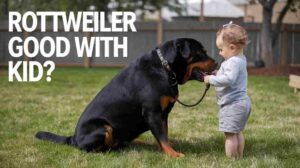
Pingback: Rottweiler Puppy Training: Your First 6 Months (A Complete Guide)
Pingback: Rottweiler Training: The Complete Guide [Expert Tips & Techniques]
Pingback: Rottweiler Care: It's More Than Just Drool and Fur!